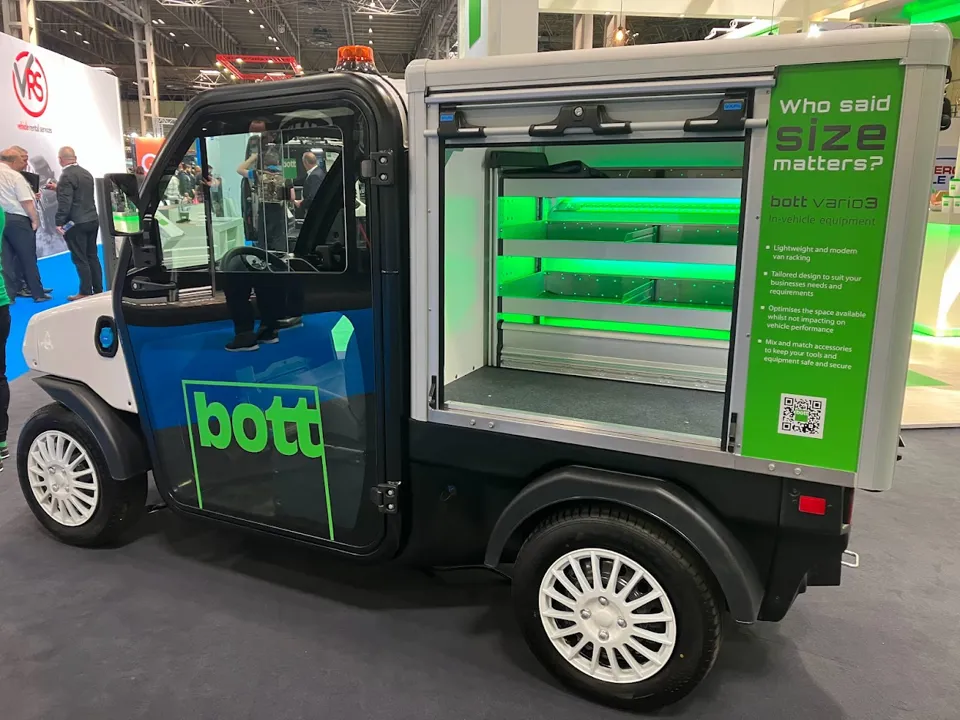Bott has signed agreements with three partners to set up a regional network of converters as it expands its business beyond the major corporates into the smaller fleet operations.
Chief executive Nick Smith, who joined the company three years ago, described the move as a big cultural step for Bott, which had built its success on the back of big fleet business.
“We were missing out on all the smaller fleets and regional business,” he said. “We needed the infrastructure to cope with scale which meant growing our regional footprint to take our product to the market.
“Our partnerships mean we now have direct and indirect routes to market.”
The partners, which include TVL and Clarks Conversions, will also benefit the larger customers by giving them locations closer to their main sites. It also helps Bott’s sustainability agenda by reducing vehicle movements.
“We are working to offer more standard solutions for quicker turnaround and to recycle better,” Smith said. “Racking is around 25-30% of the value of the conversion, and the cost is rising because of growing complexity, regulations and the vehicles, particularly electric vehicles with the electrical systems.”
He added: “We are seeing more conversations on sustainability than pricing. Social governance and waste products are priorities for procurement teams. We can see two-to-three lifecycles for our racking and the proportion of customers doing this is growing – recycling can now be 15-20% of a customer’s fleet, especially in the public sector.”
Smith hopes the partnerships will help to boost Bott’s turnover from £35 million to £50 million by 2030 by winning £10-15 million of regional business.
The company won’t solely rely on external partnerships, though. It is also planning to open its own direct fitting centres and is searching for potential sites.
Growth areas over the past year have included its eCommerce service for online self-fit as well as an increase in electric vans. Bott has been preparing for electric by investing in training – 100 staff have undergone specific EV training.
“This year, 35% of our output has been electric vehicles,” Smith said. “Normally it has been 15-20%. We expect this to continue growing.”
He is also starting to see supply lines from the manufacturers free up as production returns to normality.
“We started with a lack of vehicles but now they are flooding in. Our size enables us to cope. We have a huge investment in our inventory, so the supply chain doesn’t catch us out and we have the physical space – we have 1,500 vehicles on our site in Ashby. But the market is now starting to move; we are seeing the improvements.”





















Login to comment
Comments
No comments have been made yet.